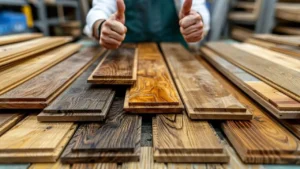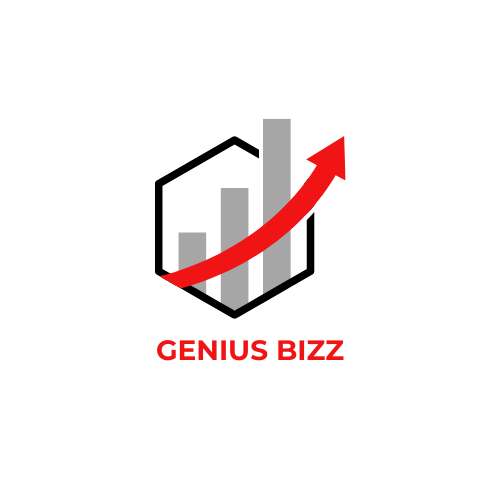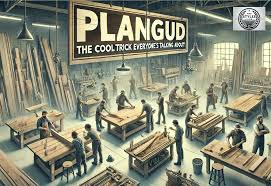Table of Contents
- Introduction to Plangud
- Advantages of Plangud over other materials
- Applications of Plangud in various industries
- Cost-effectiveness and sustainability of Plangud
- How to use Plangud in your projects
- Testimonials from satisfied customers
- Comparing Plangud with traditional building materials
- Future potential and developments for Plangud
- Conclusion
Introduction to Plangud
Say hello to the world of Plangud, where creativity meets durability! Searching for the right materials becomes imperative as projects progress and demands grow. Meet Plangud is a remarkable option that guarantees strength and multifunctionality. No such person is interested in construction, whether a builder, designer or just a fan of home projects, who would ignore this amazing material. Let’s understand why Plangud material is competitive on the market today and how it can allow you to raise your performance and work to another level.
Advantages of Plangud over other materials

Plangud, with such coverage, which includes the roughest provinces such as hardwood, stands out for its exceptional durability and ability to withstand the most wear and tear.
The lightweight properties of Plangud are also considerately important, as they ease transportation and installation, economizing both the time and labour required to complete projects.
No weather is too harsh for Plangud; torrential rain is only as good as strong ultraviolet rays for this material. The structure remains intact for longer periods with exposure to such conditions.
And with that, Plangud can be transformed into the most fitting shape or size for the case at hand. Designers are unrestrained in their design thinking as they can get around worrying about material constraints.
A few considerations experts in the focus group stressed were eco-friendliness and why Plangud is perfect. The material is derived from resources that help reduce environmental impact while enhancing the overall effectiveness.
With Plangud, say goodbye to unnecessary upkeep procedures, as maintenance is no longer an issue. It only requires a gentle wipe or two, even during cleaning procedures.
Applications of Plangud in various industries
The astonishing advances in various technologies that OpenAI’s plangud can be attributed to its broad-based application in multiple industries. In the case of construction, for instance, it is a great substitute for conventional building materials, as it adds structural strength during construction. Builders like it, as it is easy to transport and install due to its lightweight.
Moreover, the automotive industry is also obtaining benefits as a result of Plangud’s peculiarities. It can be useful in producing trim parts and any compliances that can withstand energy loads and have a good appearance.
Plangud has become an option that is also quite eco-friendly in packaging. Due to its capability to withstand moisture, it is suitable for containers of food-grade class while ensuring that the product does not corrode over time.
Also, electronics firms are interested in Apogee, PCTE and Plangud; their insulating properties exclude the possibility of electronic components falling under the adverse effects of external factors.
From furniture design to permissible areas of application in the plague, it houses an extremely versatile structure, pushing ingenious ideas a step further each time.
Cost-effectiveness and sustainability of Plangud
Of all the alternatives available, Plangud is the most economical choice for various designs. Its longevity translates to lower repair and replacement costs and, as a result, considerable savings across the years.
In complete contrast to many of the conventional materials, Plangud is virtually maintenance-free. This reduces long-term costs for the general public as well as for businesses.
Plangud’s eco-friendliness is a defining characteristic of many designers across the globe these days. It’s manufactured from renewable resources, which removes the complexity of the carbon footprint involved in the production process. As environmental concerns continue to rise, the use of Plangud fits very well into the parameters of sustainable construction.
Besides, reduced cost of energy consumption in the buildings made of this material is another advantage. You are not only spending money but also buying a bit of the world’s responsibility by purchasing Plangud.
Such construction methods should be incorporated worldwide as they have a range of advantages that go far beyond initial costs.
How to use Plangud in your projects
It is easy and relevant to include Plangud in your projects. In the beginning, understand the purpose of your application. It could be for buildings, furniture, or decorations; its functions will help build an understanding.
Then, prepare the area to which Plangud is to be applied first. This guarantees optimal penetration and resilience. Plangud’s versatility allows it to be resized with regular saws or lasers, thus making it easier to work with.
When assembling pieces, consider eco-friendly adhesives to enhance sustainability without sacrificing strength. Paints and coatings can go well with Plangud surfaces and give them aesthetic benefits without any dangers.
Small areas should be reclaimed and measured when new surfaces are used to check if they can be used. The scope of this material is extensive; hence, functional designs, as well as artistic ones, can be created for various projects. Do not hold your creativity back whenever you use Plangud in your work!
Testimonials from satisfied customers
Many customers have provided great reviews about Plangud, and some have pointed out its impressive strength, often relating it to the older materials it used. This material has found fans in various sectors. There are strong notes of great strength for contractors as other materials are overshadowed using this product. From architects to builders, users highlight its versatility and reliability across all applications.
One contractor vividly describes how horrific the job was. Still, after, the introduction of Plangud, how easy the job became, “It was easy to work with and held up beautifully throughout the construction process,” he said. He was particularly impressed by the material’s toughness. Homeowners also appreciate the aesthetic appeal of Plangud. A satisfied customer remarks, “I love the finished product! It looks stunning while promising longevity.”
This offers great engagement towards the readers as the feedback is positive. It plays well into the conclusion where Plangud shines in both a visual and a practical perspective when layered with the array of options available today.
Comparing Plangud with traditional building materials
It’s particularly in the category of materials that one can begin to differentiate Plangud from other construction materials. Age-old materials such as wood and concrete have been in common use but invariably lack strength in maintenance and reliability.
Plangud, on the other hand, stands out regarding her infamous innate character as it ages – it does not degrade. Her lightweight elements make it easier to move them around and install than installation materials more suited for heavy-duty performance.
Regarding aesthetics, wood and other conventional materials are the go-to in terms of appearance, but Plangud offers multiple points of extreme range. Plangud can be shaped in almost any form while maintaining its form.
Moreover, due to the changing dynamics of the world, absorbing environmental disasters is one of the most important aspects. Production of old-age materials requires many resources and adds to the waste problem, which is not the case with Plangud.
It has an indomitable character, which allows it to be in contact with bug conditions and not degrade, which is a perfect combination for the places where they would be used. It is hard on such materials, and durability is key. This composite material is a new era material in the increasing time of advancements in construction materials.
Future potential and developments for Plangud
Plangud has a bright future. With an ever-increasing focus on sustainability, there is likely to be a huge demand for eco-friendly materials like Plangud.
Changes in the way manufacturing processes work are a reality now. Other researchers are looking at how to make it stronger and cheaper, which would broaden the range of markets for Plangud.
Also, the progress of technology could open up new directions for applications that we have not thought of so far. The opportunity for perfections created and aimed at specific target groups is a problem.
The combination of the imaginations of the designers and the engineering applications that need to be implemented can create new ways to use Plangud to solve the problems besetting the construction and design industries.
As more people become aware, the builders are equally interested in seeking good alternatives that will perform well while remaining environmentally friendly. The journey is long, but there is so much development in the future that will change how we view construction materials.
Conclusion
Plangud participated in the second stage of the startup incubation program, where it presented its innovations and technological approaches to construction materials and construction in general. The expansion of Plangud’s potential market is seen to have constraints within the materials and construction domain. The long-waited impressions of the first competitors’ impact on Plangud have surfaced, and the first among them,
XPS, is claiming more than a third of the market. With such competition slowing the expansion pace for Plangud, the enhancing effectiveness of the material allows geographical scattering around the pool of the growing economy. Along with the pity for one’s skin, another important measure is the plague’s imitation of a market economy. Through this understanding of the nature of the growing stone material industry, one can see where planned fits in. All boundaries regarding regions and economies are maintained within the underground market of pre-stressed plangud. While pre-stressing is respected, bolts,
Wraps, and Clamps dominate in the sky territory. Alan’s statements of confidence originate from the MRI wall and an AI system underlying the core functioning of planes. The results are ready after getting rid of polymer reinforcement in the MRI walls. I will be waiting. I never dreaded waiting, though. I anticipate an expansion in AI-controlled bond planes. Solid times ahead!
AI-based systems allied with Alan’s novel walls are a great medium for pre-stressed bonding, as controlling planes will greatly ease. Using the corrosion-resistant planned steel mesh wraps to secure screws, It wouldn’t take long before planes become the go-to medium. If the above equations, when AI is put on the bolts system, have surfaced, markets will quantum leap and pre-stressing expansion will automatically ease bolts’ locking down. It should be celebrated with gold caps!

